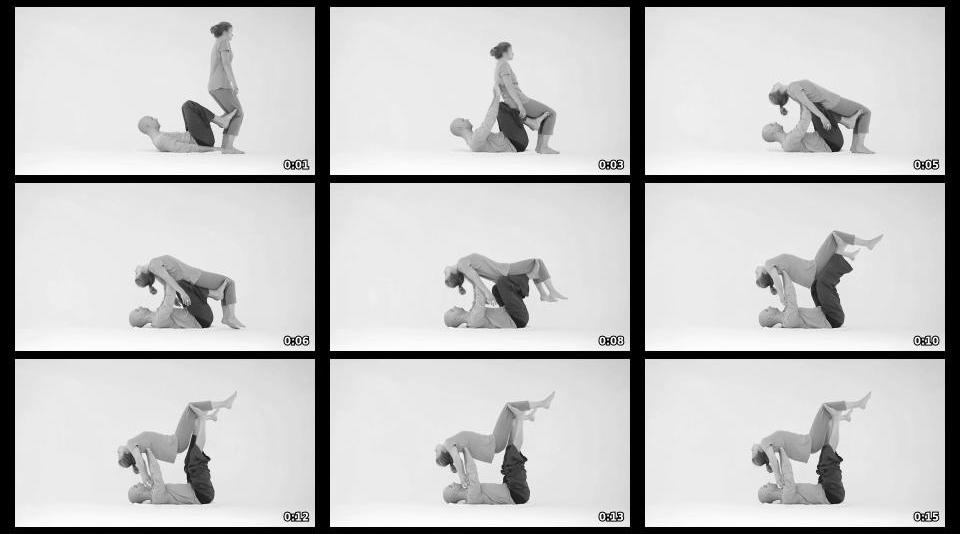Home > Beginners Flow > Stand to Waterbed

9.1 general view
First, determine the right distance to the receiver’s body by being able to reach out and touch their heels.
Next, place your feet behind their knees with your toes pointed outwards…this is an important detail.
Invite the receiver to sit down by bending their knees as if they were going to sit in a chair. Keep your knees under their sitting bones.
When the receiver lowers their back, avoid placing your hands on their ribs or too high on their shoulder.
Walk your hands along the receiver’s back until you find their shoulder blades. This is important since it offers the receiver solid and comfortable support.
Once the receiver is laying on your knees and hands, gently straighten your arms to a vertical position. Note how the giver’s hands move the receiver’s shoulders blades slightly inward to allow their chest to open and neck to relax.
If the receiver feels tense…especially in the abdomen...simply ask them to relax like they were sitting on a sofa. Once relaxed, you should be able to softly shake their arms and legs easily and freely.
If pressure on your wrists becomes too intense, slowly lower the
receiver's shoulders to your chest, like in the Waterbed to Chest element.
9.3 spotter
Note how the spotter stays focused on the center of gravity of the receiver during this element.
9.4 spotter
In this situation, the spotter stands too far from the receiver and their center of gravity. This makes him ineffective as a spotter, and there is nothing he can do once the giver loses contact with the receiver’s legs.